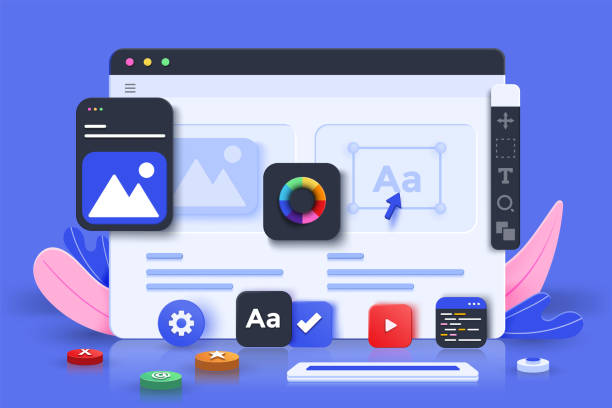Your Guide to Modern Internet Growth: Fads and Finest Practices

Emerging Technologies in Web Development
The development of internet advancement is marked by a relentless pursuit of advancement, driven by the desire to enhance user experience and streamline procedures. Arising modern technologies remain to improve the landscape, supplying programmers powerful devices to develop more dynamic and receptive applications. Secret amongst these innovations are Progressive Web Apps (PWAs), which mix the very best of web and mobile apps, offering offline functionality and enhanced performance.
Another considerable advancement is the increase of Artificial Knowledge (AI) and Device Understanding (ML), which make it possible for customized user experiences and data-driven decision-making. These modern technologies assist in chatbots, suggestion systems, and improved search functionalities, hence changing how users engage with internet applications.
Additionally, the adoption of frameworks like React, Vue.js, and Angular has actually changed front-end development, promoting modular layout and effective state monitoring. On the back end, serverless architecture and microservices cultivate scalability and versatility, enabling developers to focus on composing code without managing facilities.
Importance of User Experience
Individual experience (UX) has actually ended up being a critical focus in internet development, particularly as emerging modern technologies reshape interactions. A positive UX not just enhances user fulfillment however also drives interaction, retention, and conversions. In a significantly competitive electronic landscape, services must focus on UX to differentiate themselves and meet customer expectations.
Effective UX style is rooted in comprehending customer needs and behaviors. This includes conducting comprehensive research study, creating customer personalities, and utilizing use screening to collect insights. By doing so, designers can develop user-friendly user interfaces that assist in seamless navigation and minimize friction points.
In addition, a properly designed UX can significantly impact an internet site's performance metrics. Research studies have revealed that users are a lot more most likely to abandon a site if they come across inadequate use or too much packing times. Alternatively, a structured, user-centric layout can lead to lower bounce prices and increased time spent on the website.
Welcoming Receptive Style

Responsive layout uses fluid grids, versatile pictures, and CSS media queries to develop look these up a dynamic format that adjusts in real-time. This approach not just boosts use but likewise adds to enhanced internet search engine positions, as internet search engine favor web sites that give a consistent experience throughout gadgets. In addition, responsive layout decreases the requirement for numerous variations of a web site, streamlining upkeep and updates.
Additionally, receptive design fosters higher engagement by using a customized experience, maintaining users on the site longer and lowering bounce prices. As consumer behavior continues to advance, spending in receptive layout is important for companies intending to enhance customer complete satisfaction and drive conversions. In recap, taking on receptive style is not just a pattern; it is a basic technique that lines up with the expectations of modern-day customers, making certain access and functionality despite the device they pick to use.
Access in Internet Growth
Developing an internet site that is both receptive and obtainable is crucial for reaching a wider audience. Ease of access in web growth makes sure that all individuals, despite their capabilities or impairments, can effectively involve with digital material. This consists of individuals with visual, acoustic, cognitive, or motor problems.

To achieve accessibility, programmers must comply with the Internet Content Accessibility Guidelines (WCAG), which provide a structure for making internet material more perceivable, operable, easy to understand, and robust. Key methods consist of making use of semantic HTML aspects, providing alternative message for images, link guaranteeing sufficient color comparison, and enabling key-board navigation.
Additionally, carrying out ARIA (Accessible Abundant Internet Applications) features can improve accessibility, especially for dynamic web content and progressed customer interfaces. Testing with actual customers, including those with specials needs, is vital to determine potential barriers and improve individual experience.
Inevitably, prioritizing access not only boosts compliance with legal requirements however additionally fosters inclusivity, permitting companies to get in touch with a wider target market. As web advancement remains to evolve, embedding access right into the layout and advancement process is not simply a finest technique; it is a moral duty that profits everybody.
The Rise of Progressive Web Applications
A substantial change in web growth has emerged with the surge of Progressive Web Applications (PWAs), which flawlessly integrate the most effective functions of mobile applications and typical sites. perth australia web development perth. PWAs are created to supply users with a fast, trusted, and engaging experience, despite their web link. This is attained with service employees, which allow offline capacities and background syncing, guaranteeing that users can access web content even in low-connectivity circumstances
PWAs also utilize responsive design principles, guaranteeing that they work smoothly throughout a variety of gadgets and screen sizes. This flexibility is essential in a period where customers significantly count on smart phones for their on-line tasks. In addition, PWAs remove the need for different app shop setups, permitting for simpler and much more easily accessible distribution.
The benefits include businesses also. PWAs can lead to boosted individual interaction, higher conversion rates, and reduced advancement costs by keeping a single codebase for both internet and mobile platforms. As organizations make every effort to improve customer experiences while making the most of performance, the fostering of Progressive Web Apps remains to grow, strengthening their status as a crucial fad in modern internet development.
Conclusion
In final thought, contemporary internet growth necessitates a multifaceted strategy that encompasses arising technologies, user experience, receptive style, ease of access, and the application of Modern Internet Applications. Abiding by these trends and finest techniques not just improves customer interaction yet also fosters inclusivity, ensuring that electronic web content comes to diverse audiences. By focusing on these aspects, developers can develop impactful applications that website here satisfy the advancing demands of customers in a progressively electronic landscape.